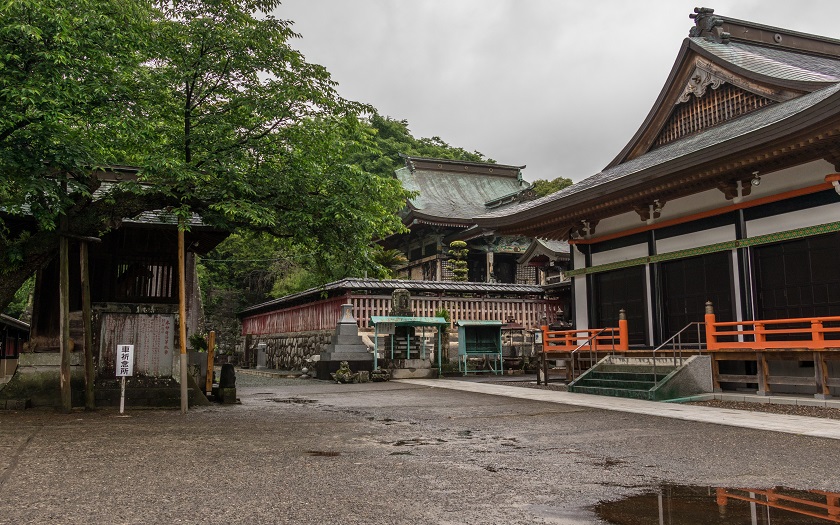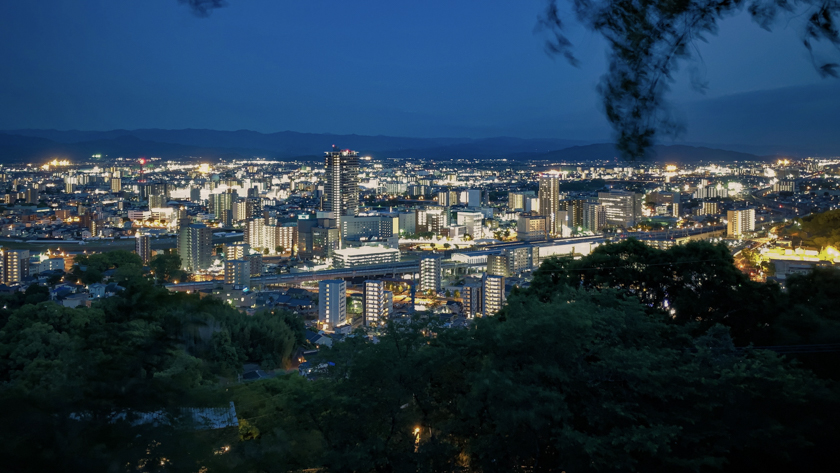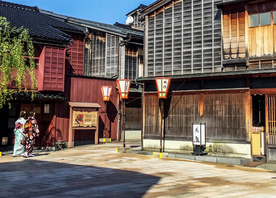Table of contents:
What to Do in Kumamoto
Hiking up Mount Kinbō
When to Visit Kumamoto
Getting to Kumamotowith the Japan Rail Pass
The southern island of Kyushu is home to all sorts of secret places international travellers have never heard of. One such destination is the lovely city of Kumamoto, a place even less well known than other underrated cities on Kyushu like Fukuoka and Kagoshima. Sitting right near the centre of the island, those who visit Kumamoto find themselves in a friendly city full of culture and nature. While there’s plenty more to do if you explore the rest of Kumamoto prefecture, here’s what to do in Kumamoto to get the most from your time there.
What to Do in Kumamoto
Although the city of Kumamoto isn’t particularly well-known to overseas travellers, those who do make the journey there won’t have reason to grow bored. Whether you’re looking for history, spirituality or some gorgeous scenery, the best things to do in Kumamoto have you covered. What follows is just a few of the best places to visit in Kumamoto to help you get started.
Kumamoto Castle
There’s no doubt that the most famous landmark in the city is Kumamoto Castle. The origins of the castle stretch back to the 1600s and Kumamoto Castle is often considered one of Japan’s most impressive castles. Sadly, the castle suffered considerable damage from earthquakes in 2016, from collapsed foundations and roofs to entire structures falling down. Reconstruction efforts over the years since have meant that parts of the castle complex are open to the public with a special elevated walkway set to open in April 2020 to allow visitors views of the inner grounds.
Suizenji Garden
A staple of many Japanese cities is the landscaped garden and when you’re visiting Kumamoto, the garden you’ll want to see is Suizenji-jojuen. The gardens were built by the local Hosokawa clan who ruled Kumamoto and centre on a tranquil lake with plenty of palms and hydrangeas. What makes the Suizenji gardens special though is that they’re designed to represent the ancient road between Tokyo and Kyoto, complete with miniature models of Japan’s iconic landmarks like Mount Fuji.
Hanaokayama
Kumamoto is set within quite a dramatic landscape with some major mountains surrounding it. To fully appreciate the city and the scenery of this part of Kyushu you’ll want to take a walk up Hanaokayama, just near the train station. There’s not much on the hill besides a small shrine, but after a 15 minute walk you’ll be rewarded with a superb view. On a clear day you’ll not only see the city in front of you but also the mountains out around Mount Aso.
Sakuranobaba Johsaien
Even though it may be quite touristy, the Sakuranobaba Johsaien is a great place to visit if you’re looking to find food and souvenirs local to the city of Kumamoto. Situated outside of Kumamoto Castle, there are multiple parts to Sakuranobaba, with the Josaien where you’ll find these regional shops. Also in the park is the Wakuwaku-za, a small museum that highlights the city and castle’s history, with exhibits specifically targeted at a younger audience.
Kumamoto Prefectural Museum of Art
The city is home to many museums that showcase art and traditional crafts from the region, but the Kumamoto Prefectural Museum of Art should be your first port of call. Opened in 1976, the museum’s collection features both art from the Kumamoto Prefecture as well as some international pieces including work from Renoir and Rodin. For many though the big attraction to this museum is its Chibajo Annex, a building with a striking postmodern design created by Spanish architects.
Honmyō-ji Temple

Looking at the spiritual side of Kumamoto, one of the city’s main attractions is the historic Honmyo-ji temple. To reach the hillside temple you’ll need to follow a picturesque staircase of 176 steps lined with lanterns. The Buddhist temple was completed in 1614 shortly after the death of Kato Kiyomasa, whose mausoleum is the focus point of the temple complex. Kiyomasa was the architect of Kumamoto Castle, so Honmyo-ji was built to honour him and features some personal items of his.
Hiking up Mount Kinbō
With so many tempting mountains surrounding Kumamoto, fans of the outdoors are spoilt for choice. Mount Aso and its smouldering volcanic crater might be the most dramatic mountain around the city, but the easiest hiking destination is actually Mount Kinbō. Also referred to as Mount Kinpō, this 665 metre-high mountain is just outside the city and is perfect for those looking for a convenient place to go hiking. Plus, from the top you might even be able to see Mount Aso in the distance in the right conditions.
When to Visit Kumamoto
As Kumamoto is located on the island of Kyushu, the city enjoys a sub-tropical climate, but that does affect when it is best to visit. Kumamoto does experience all four seasons, with spring and especially autumn the best time to visit Kumamoto. The city looks particularly magical in October and November for autumn, with the city’s Autumn Festival a highlight of its annual calendar.
March and April are also a pretty time to come as the blossoming sakura at Kumamoto Castle and Honmyoji Temple make these sights even more spectacular. One time to reconsider though is June through August, as these are the hottest and wettest months of the year.
Getting to Kumamoto with the Japan Rail Pass
You’ll find that if you’re travelling through Japan with a Japan Rail Pass that reaching Kumamoto is pretty straightforward. Kumamoto sits along the route of the Kyushu Shinkansen which travels from Fukuoka to Kagoshima, with the Sakura and Tsubasa services stopping at Kumamoto station. If you’re travelling from Osaka or Hiroshima, you’ll first need to take the Sanyo Shinkansen to Hakata Station in Fukuoka and connect to the Kyushu Shinkansen from there.





.jpg)

